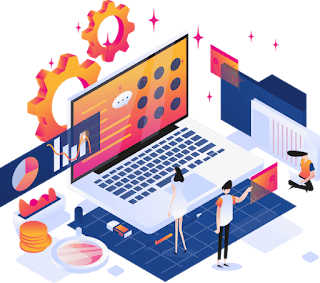Demand Forecasting is a Technologically Backed Up way of Forecasting
The one thing that drives your business is customers’ demand. Without demand, there is no business. That’s why brands advertise highly to make customers needy and generate demands. Though we cannot predict that accurately, companies still spend a hefty budget annually on predicting demand. However, it is easier said than done. Forecasters use predictive analytics to anticipate future orders based on past data and present sales trends.
Forecasting is just the beginning of the gigantic process of demand planning. The process is vital to streamline various supply chain operations and satisfy customers’ demands. It is evident that companies try to be as correct as they can be, and that’s why they use Demand Forecasting Software. Besides predicting future orders, the software contributes highly to determining the product’s price, resource requirements, expansion, and more. So, before we get into how to initiate Demand Planning and Forecasting and its benefits, let us find out more about it.
Demand Forecasting: An art of scientific prediction
The art of scientifically anticipating how many customers will be buying your products and what adjustments you need to make them more interested is called Demand Forecasting — but predicting what consumers want and when is no small task. They might need a product for a day, or the demand may vary for a few months or sometimes for years as well. The demand for perishable products, like daily-use products, can fluctuate daily. In contrast, for apparel, it varies for months, and demand for durables products varies for years.
In any case, demand forecasters use numerous techniques to forecast demand. The most accurate one is finalized based on the results and cross-verifying with various stakeholders. The prediction is then used companywide as the north star, and all the process is headed in that direction.
How to start forecasting?
Predicting demand does not have a fixed set of procedures. The process differs from company to company. What goals you want to achieve and your input for the same is why business processes vary. However, according to various experts’ the ideal procedure for forecasting demand will be as follows:
- Determine your final objective: Start by setting clear goals for your forecasts. Without an actual intent, the forecasting process is just guesswork. Before you start collecting data, you need to plan how you will use the data and how you will accomplish what you want to forecast. To identify your goal, you need to internally examine and ask questions like how many products you want to sell. Will demand for the product fluctuate? Do external factors directly impact your business? Asking yourselves these questions will clarify what objectives you are looking for.
- Inform Key Stakeholders: Never start forecasting on your own. Your progress will be hindered in between. Instead, inform all the key stakeholders like the sales team, marketing teams, operations team, R&D teams, and leadership team. One thing that you can do is make a team of mixing representatives from all teams.
- Accumulate data: Once the team is ready, start collecting data. Data fuels your whole forecasting process. You need to understand your customers’ buying patterns. You need to understand their appetite for spending and much more. All this is possible only from data. Also, the process is not just about collecting data for old customers. You need to understand the psyche of your potential customers. You need to conduct surveys, interact with new customers, advertise, and so on.
- Analyze and Validate Data: After you have collected and made an enormous pool of data, you need to segregate them. You cannot feed the raw data to Demand Planning Software. Because with raw and unfiltered data, even the best demand forecasting software will not be able to do much.
- Choose the right forecasting software: For numerous companies, after data validation, there comes a stage of choosing the suitable forecasting method. However, once you have collected and authorized your data, you need to feed the data directly to your demand forecasting software for accurate forecasting results.
- Simplify the results: Once you get the demand numbers from your software, run it several times using different techniques to get different results. Cross-verify it and choose the most accurate result. After you get actual results, interpret the same for others. It is impossible for every department, especially the siloed ones, to understand the number.
- Keep reviewing and reiterating: Reviewing is an essential step of the process. It would be best if you kept an eye on how your forecast is performing. In other words, how accurate your forecast was, how much your team can achieve, and how much more is humanly possible. Doing so will help determine the nature of your projections, and you can decide whether you want to reiterate them.
After reading the entire article, you will be able to identify how essential demand forecasting is and how you can set it up for your products. You can always rely on Avercast’s supply chain software for all your demand-related queries. Our demand forecasting software encapsulates numerous advanced forecasting tools that help you accurately and optimize your demand forecasting process. Schedule a call today to understand how Avercast software creates the difference.



Comments
Post a Comment